[ad_1]
To dry out a wet lawn, you need to start by figuring out the exact area of the problem, which is where water is collecting and where it’s draining from. Once this is identified, you can dig drainage trenches, throw grass seed on the lawn or fill low spots.
Struggling with poor drainage in your yard that’s making it impossible to dry out? A wet yard can be troublesome because you’ve got to deal with messy footprints trekking mud through your home and never getting the chance to enjoy your yard because of a soppy lawn.
Luckily, there are several ways to dry up a wet yard. Some are easy, while others are more in-depth and require more effort. The hack that works for you depends on how serious your problem is.
Keep reading for everything you need to know about drying out your wet yard fast.
7 Ways To Dry Up A Wet Yard Fast
If you’re looking for practical ways to clear up a muddy yard fast, you’ve come to the right place!
First things first: how do you know whether you have an actual problem on your hands? It’s completely normal to have a wet lawn after a period of rain and you should expect to have a wet yard for at least a day or two after a rain storm or during the rainy season. You’ll know you have an ineffective drainage system on your hands when those puddles refuse to dry up after some time.
Before we hop into how to fix it, we need to figure out what’s the root cause of the problem. Some of the most common causes of a muddy yard include standing water in low areas after rainfall, an overflow of excess water from a drainage pipe, and water runoff from a neighbor’s yard.
Poor drainage areas could also be the result of the type of soil in your yard. For example, rocky or compacted soil doesn’t absorb water easily. This is because sticky, clay-like soils usually have poor percolation, which doesn’t allow the water from the surface to seep into the ground.
The slope of your yard is also a significant factor here because leveled lawns or yards with a higher perimeter and lower center will collect excess water.
The good news is that all – except one – of these issues can be fixed by the methods below. Unfortunately, if a neighbor’s drainage is causing the issue, you’ll need to communicate with them to work on the best solution for you both.
Let’s get to it! Here are our top 7 methods to get your lawn looking as good as new.
Check Sewer And Water Lines For Leaks

A sewage line leakage or broken water main could result in lawn flooding. If you think this might be the cause of your wet yard, you need to call a plumber to confirm the issue. Depending on where you live, your plumber could repair the pipe or you would need to contact your local municipality to sort it out.
If it is indeed your sewer line that’s leaking, you’ll notice a foul smell in your yard. In addition to damaging plants, a sewer line leakage is also a health hazard and needs to be fixed as soon as possible.
Some common signs of a perforated pipe include a flooded lawn that’s inconsistent with recent weather patterns, standing water without any apparent cause, and waterlogged patches in areas with no previous flooding.
Pro tip: keep an eye on your water bills! If you notice an unexpected or unusual increase in your water bill, chances are that there’s a leak.
Dig Drainage Trenches

Digging a drainage trench is often the best way to fix wet yards because more often than not, these issues are caused by having an ineffective drainage system in place. When water is adequately directed away from your home and yard, it can lead to waterlogged areas that put you at risk of erosion and property damage.
A french drain is the most suitable type of trench to dig if you need to improve your current drainage system. A french drain makes use of a perforated drainage pipe that’s covered by gravel. This system evenly distributes water underground over a wide area, allowing your entire yard to dry up and eliminating the risk of erosion.
A french drain uses gravity to guide the water away from your lawn or the waterlogged area and should be installed at the lowest end of your yard. If you opt for a french drain, remember that it needs to remain underground, so you’ll need to dig a trench, insert the pipe, cover it with topsoil, and then reseed the area.
For an in-depth look at how this can be done, check out this video by YouTube user French Drain man:
Fill Up The Low Spots
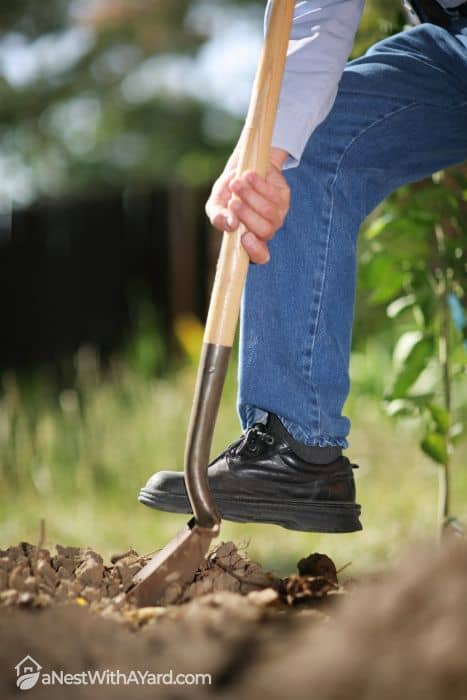
The unsuspecting low spots in your yard can actually be much more troublesome than they appear to the naked eye. These low areas are famous for collecting water and promoting waterlogged lawns.
If you think the wet areas in your yard are caused by stagnant water in low areas, all you need to do to fix it and improve your drainage system is fill them up with gravel or construction-grade sand.
Once you fill the area with a couple of inches of gravel or sand, cover it with topsoil. Pile on and tamp down enough topsoil to create an even layer that’s in line with the surrounding lawn.
This method will allow the water to drain and distribute underground. The purpose of using gravel or sand for this is to avoid run-off that’ll just collect in another area. This is especially beneficial in an area with clay soil, as the gravel and sand will help dry up wet mud even faster.
Add Grass Seed
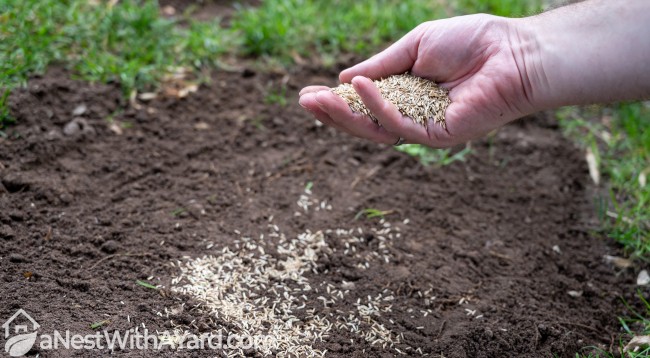
Grass seed is the perfect sponge to absorb excess moisture while growing more grass in the process. Seeds need a lot of water to grow and in the first couple of weeks after being planted, their growth is heavily dependent on the water they receive.
Extra water? No problem! They’ll suck it all up in no time, drying your wet area and giving your lawn a luscious boost.
Aerate Your Yard
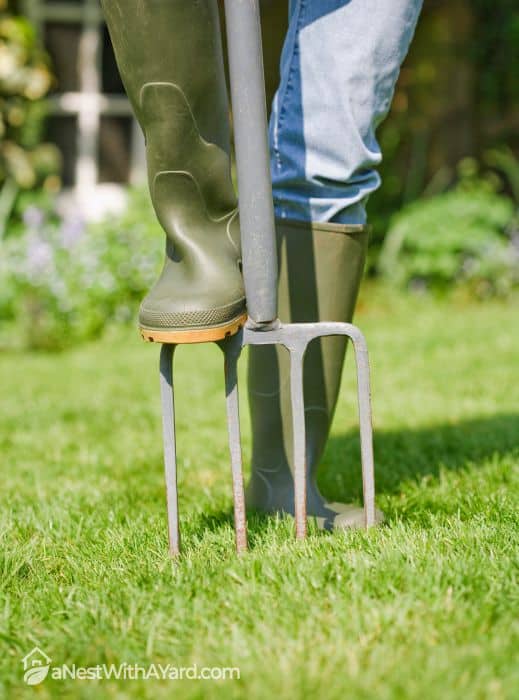
In order for soil to have the capacity to absorb excess water, it needs to be aerated. Compact soil doesn’t allow for the absorption of water and results in standing water. An aerated yard will promote the distribution of water in your yard and reduce flooding. To aerate your yard, your soil will need to be decompacted so that it has breathing room.
You can use an aeration tool like a core aerator or spike to aerate your yard. These can be rented or bought from most local hardware stores.
Create A Rain Garden
A rain garden is one of the most functional solutions to fixing a muddy yard while still being practical with the use of the excess water. The purpose of a rain garden is to direct water runoff to a single area that has a variety of water-resistant plants.
A rain garden is a smart solution even in areas with clay soil that can be a bit more difficult to fix poor drainage systems. Not only will it help keep your lawn safe from harm, but you’ll also grow a lovely garden.
To build a rain garden, you will first need to dig drainage ditches in the direction of a low-lying spot in your yard. Once you’ve set your sights on where you want your garden bed to be situated, dig it up to about 4-8 inches so that it’s able to hold water. Make a border around the garden with rocks and then get planting!
Some of the most ideal plants for rain gardens include water hyssop, pickerelweed, cattail, iris, and elephant’s ear.
Build A Hardscape
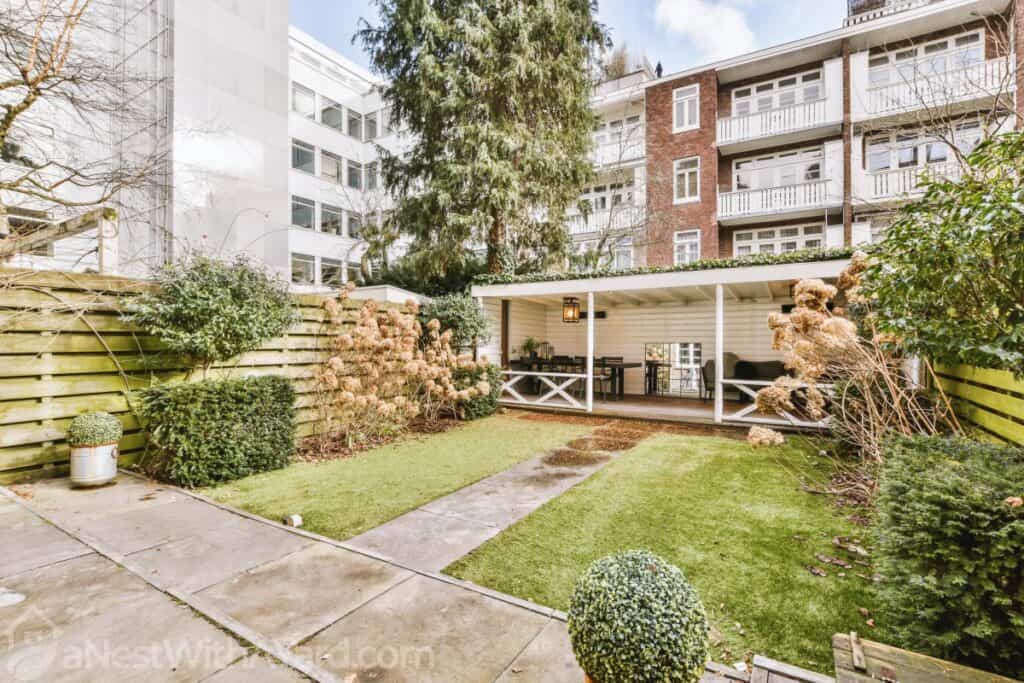
While this idea is a lot less DIY and more along the lines of hire a contractor to help, keep in mind that if you don’t want to face drainage problems again and you’re looking for a permanent solution, this is it.
A hardscape is basically an adequately drained and elevated concrete patio. They’re useful when you’re dealing with a difficult drainage system because they’re meant to shed water.
Yes, this idea is definitely more expensive than any of the others, but if you want an overnight type of solution that’s permanent too, a hardscape is the way to go.
The Risks Of Having A Wet Yard
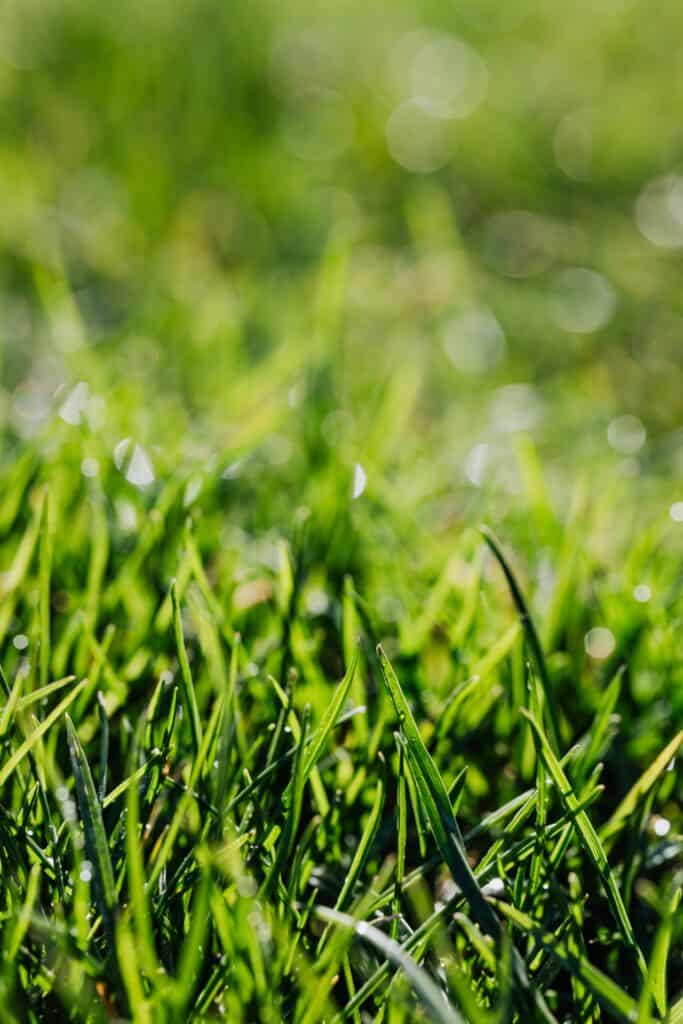
We might not typically associate a wet and soggy yard with anything too serious or harmful besides its lack of aesthetic appeal, but it can be detrimental to your yard and property.
A soggy lawn can very easily ruin your yard because it’s susceptible to fungal diseases. It also acts as a breeding ground for mosquitos and other pesky disease-carrying insects. If you’re an avid gardener, wet soil in your yard will be your worst nightmare because your precious plants will be at risk of drowning.
Let’s not forget that a wet yard is a significant cause of soil erosion and disastrous leaks that can easily infiltrate your home.
One of the biggest concerns people have is whether they can mow their lawn. This is frowned upon for many reasons. For starters, wet grass clippings can clog your lawn mower and damage your lawn. Keep in mind that wet dirt is harder to cut in general because the blades tend to clump together. This will leave you with a ragged-looking lawn.
Mowing wet lawn gives your lawn mower blades a more strenuous workout and you’ll probably need to cover the same spot two or three times in order to get a decent trim.
FAQs
What Soaks Up Water In Yard?
To soak up water in yard, you can use garden compost, sand, water-loving plants in rain gardens, leaf mold, and manure. These will open up the clogged yard and allow water to be absorbed.
What Type Of Grass Absorbs The Most Water?
The type of grass that absorbs the most water is Indian grass. This type of grass is native to North America. Meadow fescue is also a great grass to grow in wet areas because it has strong root systems and good water retention.
After Several Days Of Rain How Long Should I Let The Lawn Dry Out Before Mowing?
After several days of rain, how long you should wait before mowing depends on how much rainfall. You should wait one or two days after a heavy rainstorm or during rainy season. If you’re just dealing with light showers or morning dew, you should wait between three to five hours.
Now You Know How To Dry Up A Wet Lawn
Drying out a wet yard really isn’t that difficult at all! I hope these 7 methods have given you some insight into what could be causing the issue and how you can go about fixing it. While some of these require you to get your hands a little dirty, the results will speak for themselves!
Just remember that prolonged standing water is never a good thing so it’s best to be proactive when you get an inkling that your drainage system is messing about.
If you found this article helpful, please leave a comment. We’d love to hear from you!
[ad_2]
Source link
